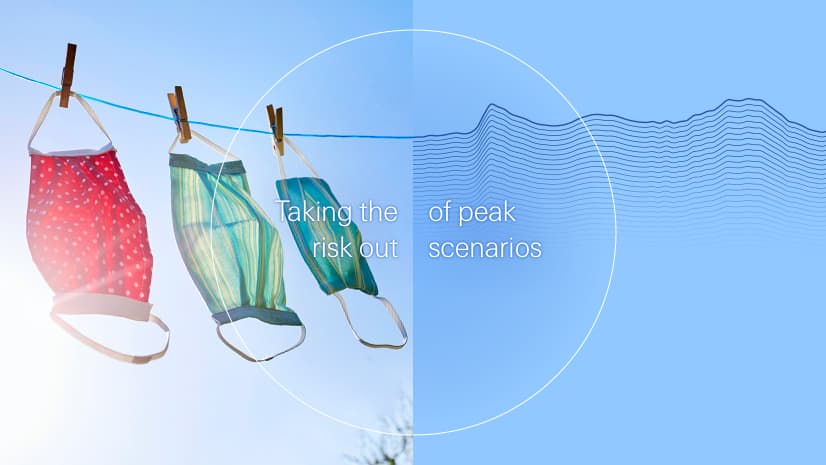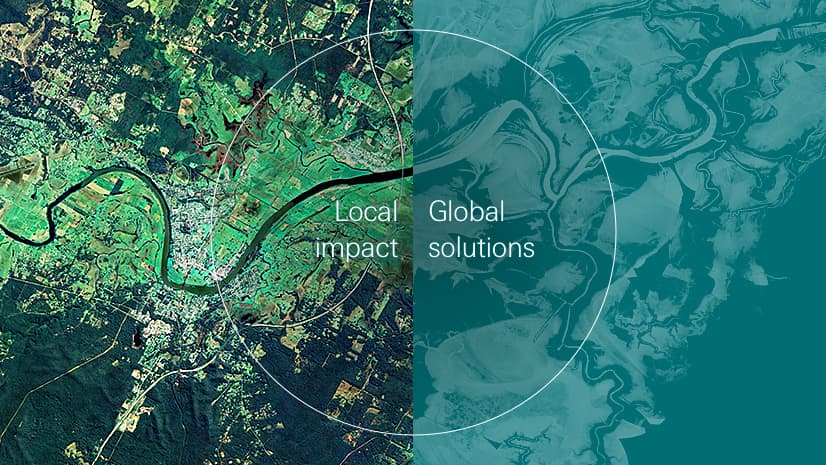risk out
scenarios
The chart illustrates the peaks in mortality spike in the US in the first half of 2021. Events like this can impact life insurers, who carry the risk on life insurance policies. Risk transfer through reinsurance is an important way of managing these peak risks.
Source: Center for Disease Control and Prevention, data until 5 June 2021 as of 22 July 2021.
- Home
- Strategy in action
- Risk transfer
Risk Transfer: An attractive business that delivers in times
of crisis
Risk transfer is at the heart of all Swiss Re businesses, from Reinsurance and Corporate Solutions to Swiss Re’s digital white-labelling platform iptiQ.
Risk transfer through reinsurance is the powerhouse of Swiss Re’s earnings potential and value creation for shareholders. Since the inception of the Reinsurance Business Unit in 2012, the business has earned over USD 288 billion in net premium and fee income, generating an aggregated US GAAP net income of USD 21.9 billion at an average return on equity of 12% per year.
In 2021, the Reinsurance business delivered a net profit of USD 1.6 billion. This comprised a P&C Re net profit of USD 2.1 billion, which offset L&H Re’s net loss of USD 523 million as the segment was impacted by high COVID-19 claims.
These results are testament to the strength of Swiss Re’s diversified business model. Similar proof of this example occurred in 2017, when L&H Re’s USD 1.1 billion in net income helped to offset the USD 413 million loss in P&C Re, caused by losses from the Harvey, Irma and Maria trio of hurricanes.
That year, the Group absorbed the P&C natural catastrophe losses for the year and delivered on its commitment to return USD 2.6 billion to shareholders in the form of dividend payments and a share buyback.
2021: Proof of concept for reinsurance
In a year dominated by the COVID-19 pandemic, Swiss Re’s Reinsurance provided strong support for clients. In 2021, Reinsurance served its clients with USD 28.4 billion in claims support and reserves for future expected claims. In 2021, Reinsurance set aside almost USD 2 billion in mortality claims and reserves related to the COVID-19 pandemic.
While the COVID-19 impact is significant, it represents an additional claims burden of only 7% of Reinsurance’s total claims support for clients for the year.
In fact, Swiss Re’s business is designed to withstand pandemics. Since 2006, Swiss Re has been using its own pandemic model to estimate the potential impact on our portfolios from lethal pandemics and inform key business decisions, such as setting risk appetite, pricing for pandemic risk and managing capital. The pandemic model is constantly improved and updated, as new knowledge emerges, and is regularly audited
Further, peak events such as COVID-19 strengthen ties to clients, as Swiss Re delivers not only claims support, but valuable research and technical knowledge.
Supporting a trillion-dollar global market
The scale of the global insurance industry is vast. In 2021 alone, global insurance premiums reached USD 7 trillion. The life insurance industry’s part of that pool was USD 3.1 trillion.
The opportunities for growth are attractive. In 2021, the global primary life market grew by 5% to a total of USD 3.1 trillion. Swiss Re Institute forecasts continuing growth of 3% in 2022 and 2023 for primary life business. Life reinsurance premiums, which are currently estimated at USD 110 billion globally, are forecast to have similar growth rates.
An important factor behind the growth in reinsurance premium is the increasing demand for large transactions, where insurance clients require a tailor-made reinsurance solution for a specific issue.
This type of reinsurance plays directly to Swiss Re’s strengths of innovation combined with in-depth knowledge of our clients’ needs built up over a long-term relationship.


